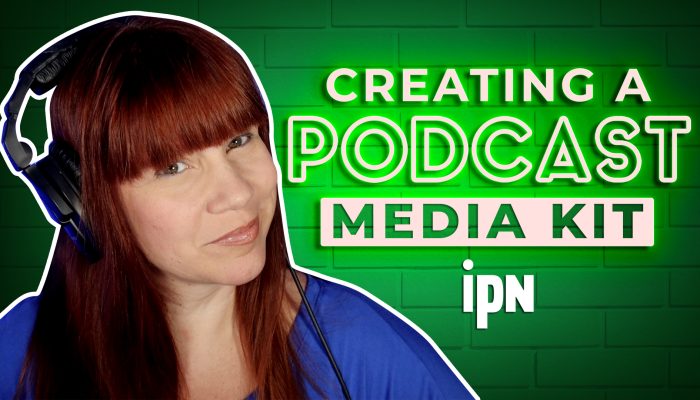
Auditing your podcast content might not be the flashiest part of podcasting, but it’s one of the most important. Think of it as a way to step back, evaluate what’s working, and make improvements that help your show grow. Whether you’re looking to better engage with your audience, refine your strategy, or stand out in a crowded space, a content audit is a powerful tool.
Why Audit Your Podcast Content?
With regular audits, you’ll have the insights you need to create content that resonates, engages, and helps your show thrive. Here a few ways a content audit for your podcast can help you grow:
- Understand What Your Audience Loves: A content audit helps you identify which episodes perform best and why. Does an episode length tend to perform better? Do they prefer interviews over solo episodes? By analyzing trends in your downloads and listener feedback, you can gear your content toward what your audience values most.
- Spot Opportunities for Improvement: No matter how long you’ve been podcasting, there’s always room to grow. Use an audit to evaluate critical elements of your show like audio quality, episode flow, and engagement. Is your sound consistent? Are your intros and outros engaging? Are your calls-to-action effective?
- Plan for Long-Term Growth: Growth doesn’t happen by accident. Auditing your content gives you data to create a roadmap for the future. If certain topics or formats consistently perform better, you’ll know where to focus. Similarly, revisiting your goals during an audit ensures your podcast evolves alongside your audience’s needs.
A Step-by-Step Guide to Auditing Your Podcast Content
The goal for a podcast content audit is to evaluate your show from every angle—content, performance, and audience engagement—so you can uncover what’s working, what’s not, and where you can improve. Here’s a step-by-step guide to help you audit your podcast content effectively:
Step #1: Define Your Goals
Before diving into your episodes, take a moment to clarify what you want to achieve with your podcast. This will serve as your guide throughout the audit. Ask yourself:
- What is the purpose of my podcast? (e.g., entertain, educate, inspire, build authority)
- Who is my target audience?
- Are my episodes currently aligned with these goals?
- What does success look like for my podcast? (e.g., higher downloads, increased engagement, listener retention)
By understanding your goals, you can evaluate your content through the lens of whether it’s helping you move closer to those objectives.
Step #2: Review Your Podcast Analytics
Your analytics are a treasure trove of insights into how your podcast is performing. Most podcast hosting platforms (like Buzzsprout, Libsyn, or Anchor) provide useful metrics you can use to evaluate your episodes. Key analytics to focus on include:
- Episode Downloads: Identify your most and least popular episodes. What topics, formats, or guests are driving downloads?
- Listener Retention: Check where listeners drop off during episodes. Are they leaving halfway through? If so, you might need to tighten up your pacing or improve your storytelling.
- Engagement Trends: Look for spikes or dips in downloads over time. Did a particular marketing effort, guest, or topic drive a noticeable increase?
Step #3: Analyze Your Episode Content
Next, take a critical look at your actual episodes. Listen to a selection of your recordings (especially your top performers and underperformers) and evaluate them based on the following:
- Audio Quality: Is the sound clear and consistent? Are there noticeable issues like background noise or uneven volume?
- Structure and Flow: Is the content well-organized, or does it feel scattered? Do you hook your audience early on and maintain their attention throughout?
- Intros and Outros: Are your intros engaging and to the point, or do they drag on? Are your outros clear and effective in driving action (e.g., asking for reviews, directing listeners to your website)?
- Relevance: Is the content still timely and valuable to your audience? Are you covering topics that align with their interests and needs?

Step #4: Gather Feedback from Your Audience
Your listeners are your best source of feedback. They’re the ones tuning in, so their opinions can provide invaluable insights into what they love about your podcast—and what they think could be improved. To get feedback from them, you can create a short survey and email it to subscribers. Consider running a giveaway with filling out the survey as an entry requirement. You can also run polls on your social media pages.
Step #5: Compare Your Podcast to Competitors
No podcast exists in a vacuum. Take some time to compare your show to others in your niche by answering the following questions:
- What Are They Doing Well? Listen to a few episodes of popular podcasts in your category and note their strengths. Is it their audio quality, guest selection, or storytelling style?
- What Can You Do Differently? Look for gaps in their content that you can address, or ways to bring your unique perspective to similar topics.
- How Do You Stack Up? Compare factors like production quality, branding, and episode structure. This can help you identify areas where you might need to level up.
Step #6: Evaluate Your Branding and Format
Going beyond the specific content in your episodes, you also want to assess your branding and format. Strong branding and a consistent format make your podcast more appealing, professional, and easy to follow, which helps attract and retain listeners. So, as part of your audit, look at your cover art, episode titles, episode descriptions, and consistency in format. You might find you get more listeners when you work with a specific graphic designer or a keyword in your episode description improves its overall reach.
Step #7: Create an Action Plan
Once you’ve gathered all your insights, it’s time to put them to use. Create an action plan to address the areas you’ve identified for improvement. Here’s how:
- Document Your Findings: Write down what’s working well, what needs improvement, and any new opportunities you’ve uncovered.
- Prioritize Changes: Focus on high-impact areas first, like improving audio quality or addressing audience feedback on episode topics.
- Set Goals: Establish specific, measurable goals based on your audit.
- Schedule Regular Audits: Make auditing a regular part of your podcasting process. A full review every 6-12 months helps you stay on track and adapt to changes in your audience or niche.
Conclusion
The key to a successful podcast content audit is to turn your findings into action. Use your audit results to make meaningful improvements, experiment with new ideas, and set clear goals for the future. And don’t stop there—schedule regular audits to keep your podcast fresh, relevant, and growing.
At the end of the day, your podcast is a reflection of your dedication to your craft and your audience. By investing time in a thoughtful content audit, you’re not just making your podcast better—you’re creating something your listeners will love and keep coming back to. So, take that first step, dive into your content, and watch your podcast reach new heights.









